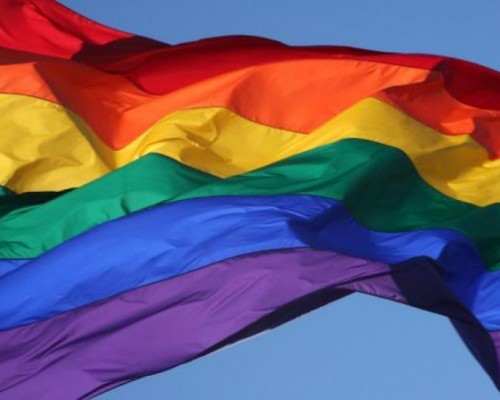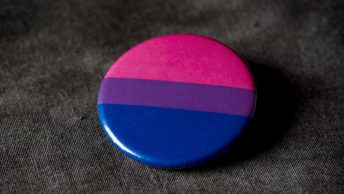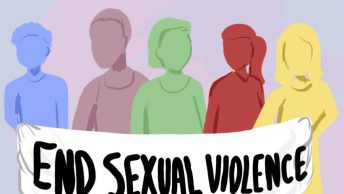
After Tinder was introduced in 2012, (online) dating has changed drastically. Because of the widespread availability of dating apps, going on dates or seeking hookups is just one swipe away.
Some dating apps specifically target the LGBTQ+ community, with the most (in)famous gay dating app being Grindr. Other LGBTQ+ dating apps have emerged over the years as well, such as HER and Tser.
Despite most dating apps having an age restriction at 18 years old, LGBTQ+ adolescents younger than 18 also find their way to these apps. Studies have shown that sexual minority adolescents are more likely to seek partners online than heterosexual adolescents (Rice et al., 2015).
This also became evident during an interview project I worked on when a participant mentioned his online gay dating experiences, despite being only 16 years old.
Thus, the availability and accessibility of online dating has made it easier for LGBTQ+ adolescents to experiment with dating and hookups.
Risks
On the one hand, online dating enables LGBTQ+ adolescents to experiment with dating and sexual relationships during adolescence, just like their heterosexual and cisgender peers can.
On the other hand, these opportunities to date or find a hookup also come with considerable risks, especially for LGBTQ+ adolescents. One of these risks is experiencing dating violence. The question then is, how large is this risk?
To answer this question, we have to move our attention to the US. Generally, studies indicate that LGBTQ+ adolescents are more likely to experience dating violence. For example, LGBTQ adolescents are up to 3.9 times more likely to experience physical, emotional, and sexual dating violence than their heterosexual or cisgender peers (Martin-Storey, Pollitt, & Baams, 2020).
Thus, LGBTQ+ adolescents have a substantially higher risk of negative experiences with dating and hookups compared with heterosexual and cisgender adolescents.
Dating experiences among LGBTQ+ adolescents
Research has also acknowledged heterogeneity in these dating experiences among LGBTQ+ adolescents. Some adolescents are more likely to experience dating violence and sexual harassment and assault than others.
For example, in one of my recent studies among US sexual and gender minority adolescents, we found that especially bisexual adolescents had more experiences with dating violence and sexual harassment and assault than gay and lesbian adolescents, as did transgender and nonbinary adolescents compared to cisgender sexual minority adolescents (Kiekens, Baams, Fish, & Watson, 2021).
Thus, our attention for dating violence should perhaps be focused on who is most likely to experience dating violence and why?
The Netherlands
Going back to the Netherlands, is there any indication that similar patterns in dating violence can be found here?
Although Dutch studies with LGBTQ+ adolescents on dating violence are scarce, research with 17-24 year olds showed that sexual violence is more common among gay and bisexual males than among heterosexual youth (de Graaf, Van den Borne, Nikkelen, Twisk, & Meijer, 2017).
Considering that the aforementioned studies from the US focused on a broader range of dating violence experiences, current research from the Netherlands is likely to only show the tip of the iceberg of experiences with dating violence that Dutch LGBTQ+ adolescents might have. A 2017 study from Rutgers underlines this, and shows high rates of dating violence and sexual violence among sexual minority adolescents (Nikkelen, Tijdink, De Graaf, & Bakker, 2019).
Support
Where does this leave us? How can we support LGBTQ+ adolescents to discover and experiment with dating and their sexuality, and at the same time limit the risk of dating violence?
I believe that early sexuality education plays a crucial role. Many Dutch adolescents indicate that they lack the necessary knowledge on boundaries, sexting, and intimate relationships to safely engage in these new experiences (de Graaf et al., 2017).
Covering these topics, and combining this with a curriculum that pays explicit attention to sexual and gender diversity would provide adolescents, and especially LGBTQ+ adolescents, with the tools to more safely navigate the world of dating and dating apps.
Wouter Kiekens, PhD student, Department of Sociology and the Interuniversity Center for Social Science Theory and Methodology, University of Groningen
References
de Graaf, H., Van den Borne, M., Nikkelen, S., Twisk, D., & Meijer, S. (2017). Seks onder je 25e: Seksuele gezondheid van jongeren in Nederland anno 2017. Utrecht: Eburon.
Kiekens, W. J., Baams, L., Fish, J. N., & Watson, R. J. (2021). Associations of relationship experiences dating violence, sexual harassment, and assault with alcohol use among sexual and gender minority adolescents. Journal of Interpersonal Violence. doi: 10.1177/08862605211001469
Martin-Storey, A., Pollitt, A. M., & Baams, L. (2020). Profiles and predictors of dating violence among sexual and gender minority adolescents. Journal of Adolescent Health, 1–7. doi: 10.1016/j.jadohealth.2020.08.034
Nikkelen, S., Tijdink, S., De Graaf, H., & Bakker, B. (2019). Seksuele gezondheid van lesbische, homoseksuele en biseksuele personen in Nederland anno 2017. Retrieved from https://www.rutgers.nl/sites/rutgersnl/files/PDF-Onderzoek/2017_LHB_Rapportage_incl_summary.pdf
Rice, E., Winetrobe, H., Holloway, I. W., Montoya, J., Plant, A., & Kordic, T. (2015). Cell phone internet access, online sexual solicitation, partner seeking, and sexual risk behavior among adolescents. Archives of Sexual Behavior, 44(3), 755–763. doi: 10.1007/s10508-014-0366-3







